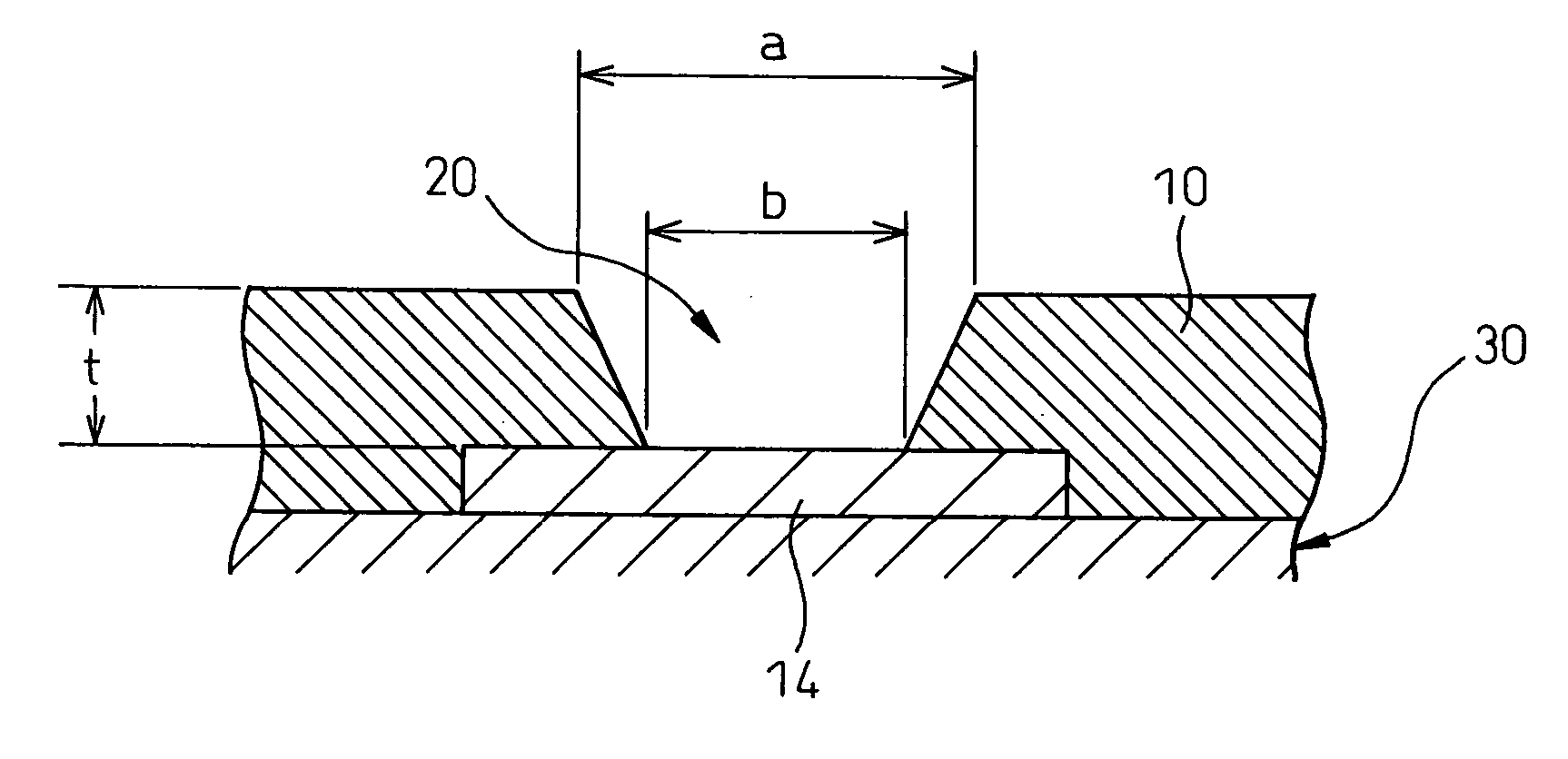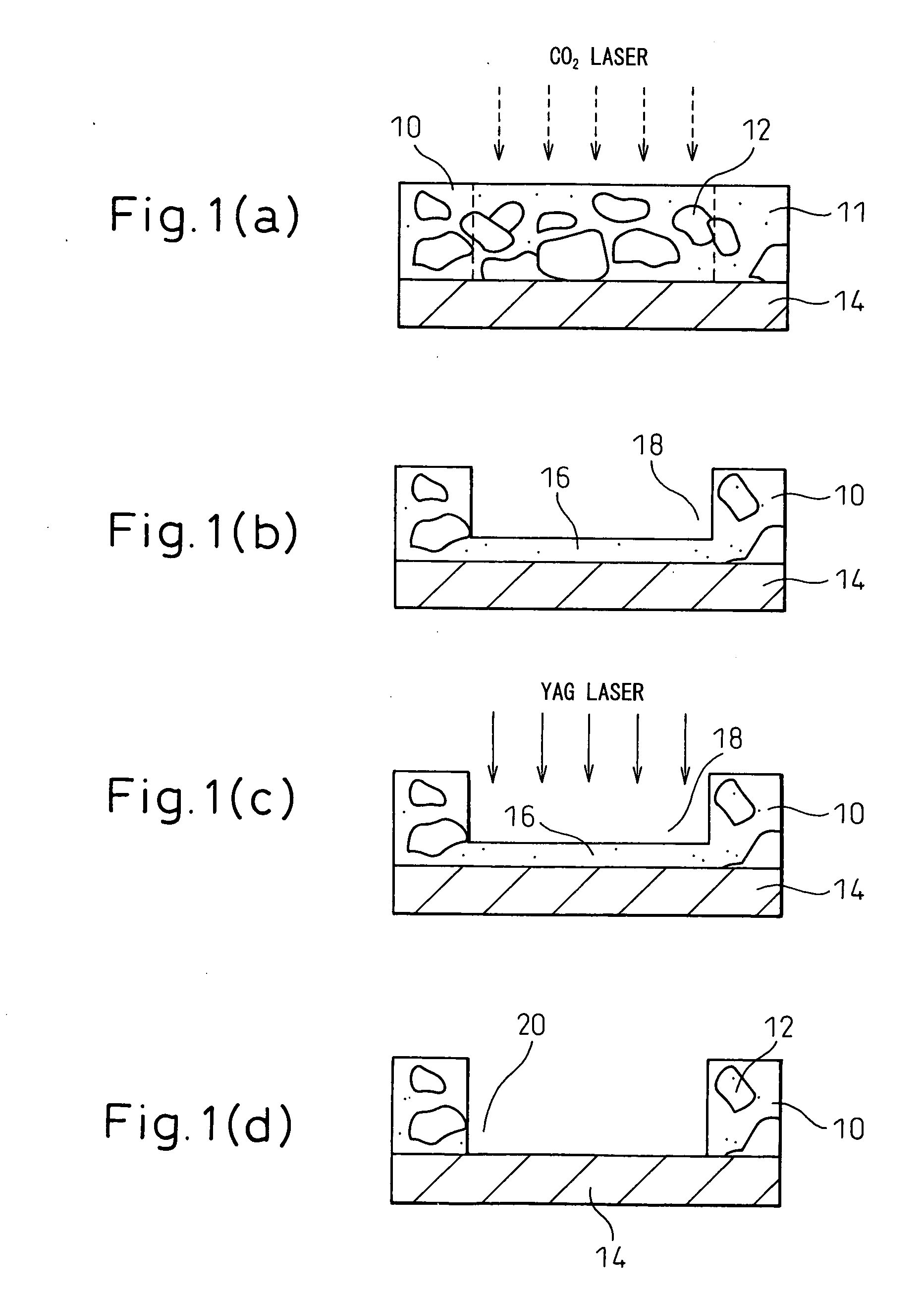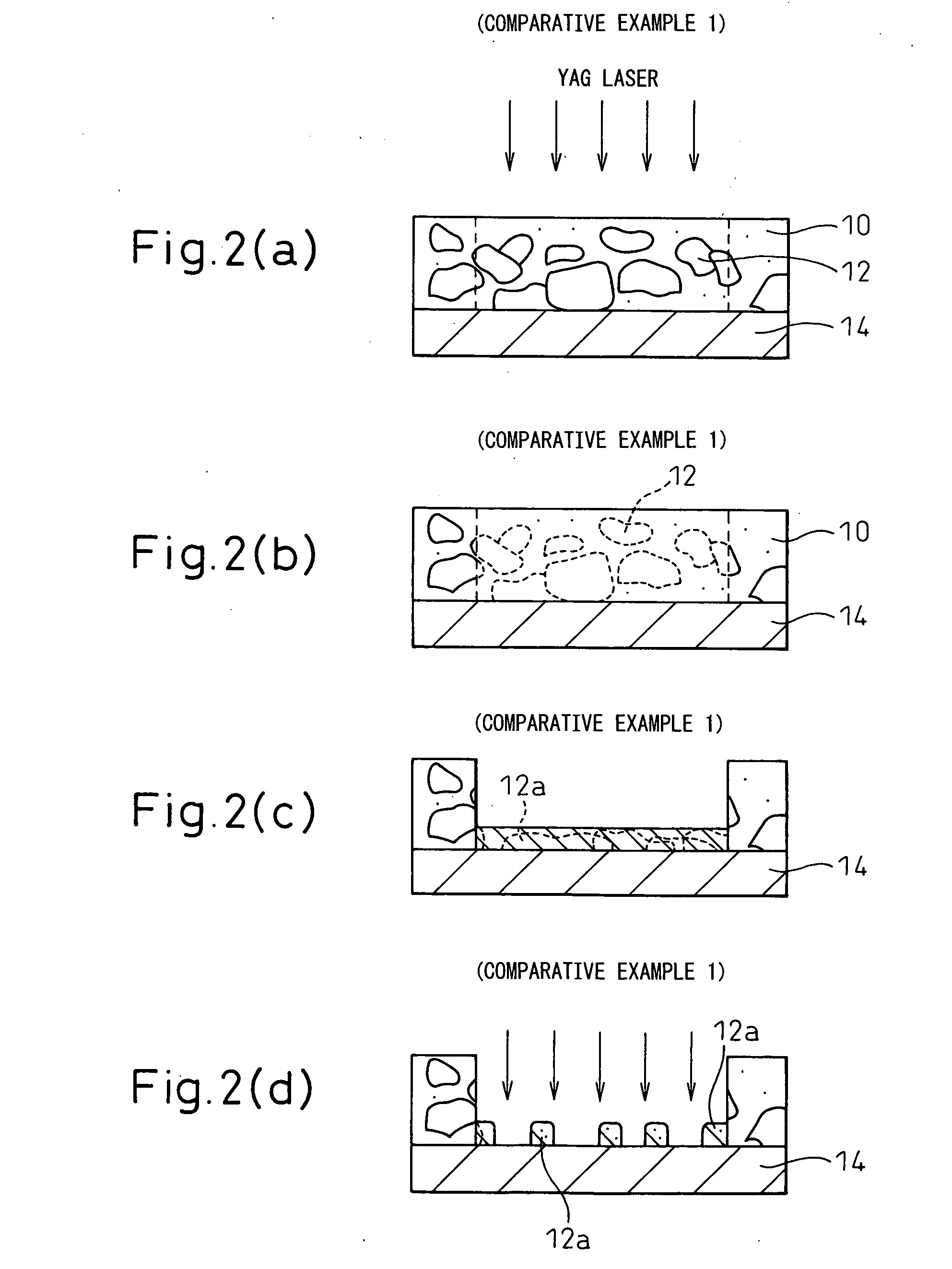Method of forming via hole in resin layer
- Summary
- Abstract
- Description
- Claims
- Application Information
AI Technical Summary
Benefits of technology
Problems solved by technology
Method used
Image
Examples
example 1
[0031]FIG. 1(a) to FIG. 1(d) are explanatory views of a method of forming a via hole in a resin layer by the method of the present invention (Example 1). Reference numeral 10 is a resin layer, while 14 is an underlying layer. The resin layer 10 includes an inorganic filler 12, so in Example 1, a via hole is formed in a resin layer 10 including titanium oxide as an inorganic filler 12 with a band gap of 3 to 4 eV. As the resin 11 forming the resin layer 10, a polyphenylene ether (PPE) resin was used. The PPE resin is a resin difficult to remove by desmearing, while the inorganic filler 12 is mixed in by a weight ratio with the resin 11 of 1:1. Note that the rate of mixture of the inorganic filler in the present invention is not limited to the rate in Example 1.
[0032] In Example 1 as well, a laser beam is fired at the resin layer in the same way as the conventional method (Comparative Examples 1 to 3) to remove the resin at the location for forming the via hole. In Example 1, the ope...
example 2
[0041] The diameter of the via hole 20 to be formed in the above Example 1 was changed. That is, in FIG. 4 showing the diameter of the via hole, in Example 1, the diameter a of the via hole 20 was made 90 μm and the diameter b of the bottom was made 60 μm (same in Comparative Examples 1 and 2, Reference Example, and later explained Example 3), while in Example 2, the diameter a of the top of the via hole 20 was made 150 μm and the diameter b of the bottom was made 120 μm. Along with this, for the firing condition of the laser beam fired, in particular the amount fired, the first laser comprised of the CO2 laser fired a 1.0 mJ laser pulse four times per via hole for a total of 4.0 mJ. On the other hand, the second laser comprised of the UV-YAG laser had a wavelength of 355 nm or the same as Example 1, but fired 0.6 mJ per via hole.
[0042] The rest of the conditions are exactly the same as in Example 1.
example 3
[0043] In Example 3, the diameter of the via hole 20 to be formed is the same as Example 1, but the UV-YAG laser used as the second laser is not one having a wavelength 355 nm used in Examples 1 and 2, but one having a wavelength of 266 nm.
[0044] The rest of the conditions are exactly the same as in Example 1.
PUM
 Login to View More
Login to View More Abstract
Description
Claims
Application Information
 Login to View More
Login to View More - R&D
- Intellectual Property
- Life Sciences
- Materials
- Tech Scout
- Unparalleled Data Quality
- Higher Quality Content
- 60% Fewer Hallucinations
Browse by: Latest US Patents, China's latest patents, Technical Efficacy Thesaurus, Application Domain, Technology Topic, Popular Technical Reports.
© 2025 PatSnap. All rights reserved.Legal|Privacy policy|Modern Slavery Act Transparency Statement|Sitemap|About US| Contact US: help@patsnap.com



